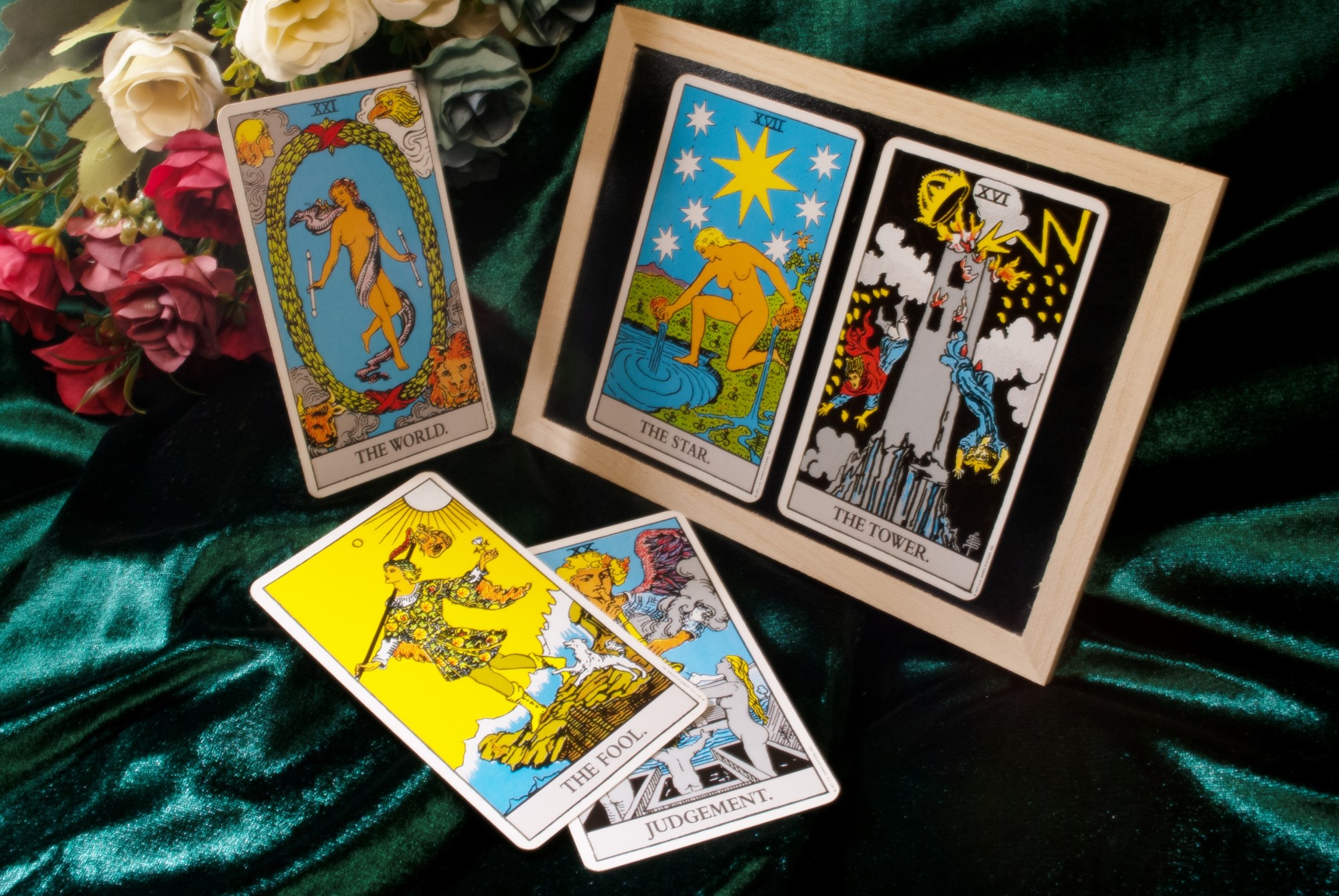
It’s on the Cards: What Cards Are in a Tarot Deck?
The rich history of tarot cards stretches back into medieval Europe and the ancient Muslim world. Today, tarot cards are one of the principal tools of spiritual readings and future divinations.
What cards are in a tarot deck is determined by which deck you use. There are a few different types of decks, but the most recognized is the Rider-Waite. This type of tarot card deck has 78 cards separated into two distinct groups.
In the following article, we’ll look at the origin of the cards and examine the cards in the deck.
A Brief History of Tarot Cards
What we think of today as tarot cards were first introduced into Europe by Muslim soldiers in the 1500s. Spaniards and Italians soon adapted the hand-painted cards for their own use. People used the cards to play a game similar to today’s bridge. Another game had players make fanciful stories from the cards’ depictions.
It wasn’t until the late 1700s that French occultists adapted the cards for spiritual and fortune-telling uses. Many different occultists used the decks, including famously the mystic Aleister Crowley in the early part of the 20th century.
But it was in 1909 when occultist A.E. Waite and publisher William Rider first started printing their now-famous tarot cards. Amazingly, the Rider-Waite cards haven’t gone out of print since that first issuing.
What Cards Are in a Tarot Deck: Major Arcana
The 78 cards come in two sets—the major and minor arcana. Also sometimes referred to as trump cards, the 22 cards of the major arcana generally concern themselves with bigger themes. The artwork on the cards is also some of the more iconic.
Here are the major arcana and their meanings:
- The Fool, 0: Ignorance and happy carelessness
- The Magician, I: Healing or spirituality; an unexpected solution
- The High Priestess, II: Femininity, wisdom, mystery
- The Empress, III: Nature, fertility, and the Earth goddess
- The Emperor, IV: Leadership, stability, and skills
- The Hierophant, V: The natural laws, study, and mastery
- The Lovers, VI: Challenging decisions, compromise, and growth
- The Chariot, VII: Triumph and empowerment
- Strength, VIII: Ego and a search for a more refined inner self
- The Hermit, IX: Reflection, isolation
- Wheel of Fortune, X: The possibility of positive change, the cycle of life
- Justice, XI: Fairness and fair play
- The Hanged Man, XII: A long wait, surrender, and consequences
- Death, XIII: Endings, the harvest, freedom
- Temperance, XIV: Moderation and self-betterment
- The Devil, XV: Pleasure, addiction, imprisonment, and unhealthy relationships
- The Tower, XVI: Danger, turmoil, and sudden change
- The Star, XVII: Inspiration and the Divine
- The Moon, XVIII: Illusion, deception, and contention
- The Sun, XIX: Good fortune, confidence, and realism
- Judgment, XX: Decisions yet to come, resurrection
- The World, XXI: Change in a big way, full knowledge of one’s self
What Cards Are in a Tarot Deck: Minor Arcana
The remaining 56 cards of the Minor Arcana are made up of four numbered suits: wands, cups, swords, and pentacles.
Each suit, in turn, has a page, knight, queen, and king. These suits and named cards in the minor arcana all have different interpretations depending on their combinations with other cards.
These combinations’ meanings can vary wildly, and it’s best to consult a trained card reader for a detailed description. Click here for one such service.
Reading the Future
There is no one way to read a tarot card deck, but it is a fact that there a great number of people who find satisfaction in receiving a glimpse of the future through a good reading. Or by pondering what cards are in a tarot deck? And thousands of people turn to tarot card readers each year for entertainment and et the cards interpret their lives.
Did you find this article useful? Find more articles about mysticism and cards by searching this website.
